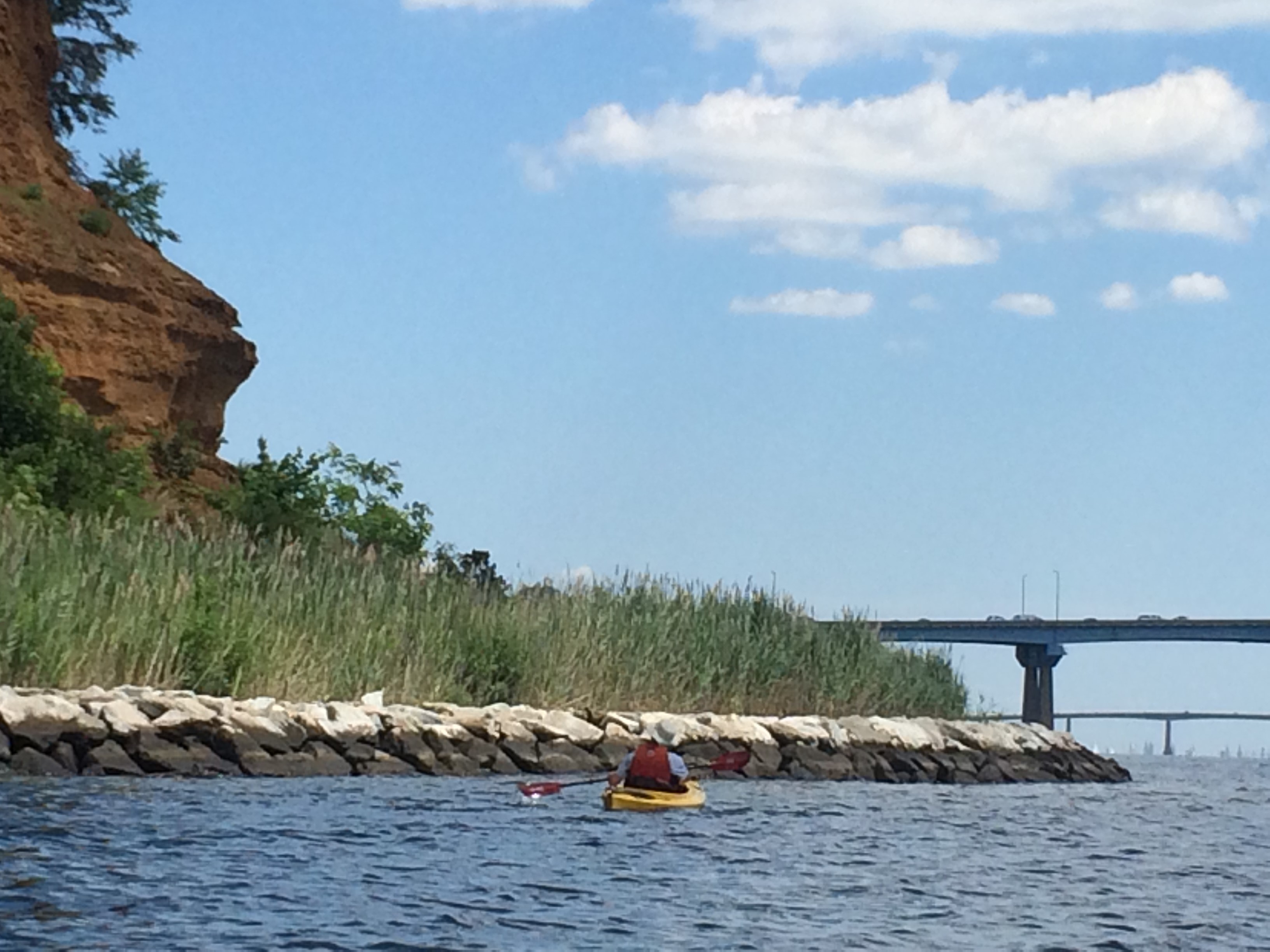Over the last few decades the increasing awareness of the potential negative impacts of hardened coastal protection such as seawalls, bulkheads, and groins, has increased interest in the development of approaches that minimize the destructive effects of traditional shoreline protection approaches on natural habitats. Connecticut has passed legislation to encourage the consideration of “feasible, less environmentally damaging alternatives” of shoreline erosion control.
Nonstructural approaches (such as beach nourishment, restored or enhanced seagrass, vegetated, graded bluffs and creation or restoration of fringing salt marshes) are frequently referred to as “living shorelines.” A living shoreline provides ecosystem services such as marsh habitat that a hard structure such as a seawall does not. In the Chesapeake Bay area, living shorelines have long been used to control erosion from boat wakes along embayments and water courses and may be as simple as coir logs along an embankment or a hybrid structure which combines a hard structure like a rock sill (to slow the wave energy and current) with marsh habitat. (Coir logs are tube shaped erosion control features made from natural, biodegradable materials.) To learn more about living shorelines and see before and after photographs, see NOAA Living Shorelines.
Although Connecticut has not formally adopted a definition for Living Shorelines, the Connecticut DEEP Office of Long Island Sound Programs is using the following working definition:
A shoreline erosion control management practice which also restores, enhances, maintains or creates natural coastal or riparian habitat, functions and processes. Coastal and riparian habitats include but are not limited to intertidal flats, tidal marsh, beach/dune systems, and bluffs. Living shorelines may include structural features that are combined with natural components to attenuate wave energy and currents.
Consistent with this working definition, recent statutory amendments that refer to the concept of living shorelines highlight a necessary resource-oriented component: living shorelines techniques “maintain or restore coastal resources or habitat” [CGS §22a-92(e)] and are projects “for which the primary purpose or effect is the restoration or enhancement of tidal wetlands, beaches, dunes or intertidal flats.”[CGS §22a-109(c)].
Not all coastal or riverine sites are appropriate for a living shoreline approach. Living shorelines will be most successful where:
- • conditions support marsh grass or sand deposition;
- • the shoreline is protected from large waves and boat wakes;
- • upland vegetation does not shade the shoreline;
- • the nearshore region slopes gradually;
- • the shoreline is stable or slightly erosional; and
- • upland homes and infrastructure are not vulnerable to erosion and coastal/riverine flooding.
The U.S. Army Corps of Engineers has adopted the term “Natural and Nature-Based Features” as a way of improving coastal resilience, and have developed several publications which include the use of vegetated features to attenuate wave energy. See USACOE’s Coastal Risk Reduction and Resilience for more information.
A Story Map modeling site suitability for several Living Shorelines options in Connecticut is now available.
It is important to work with both a coastal engineer and DEEP OLISP technical and permitting staff to understand the causes of erosion along a particular stretch of shoreline before designing any type of erosion control structure, including living shorelines.

Marsh grass protected by low, rock sill. Photo: Jennifer O’Donnell